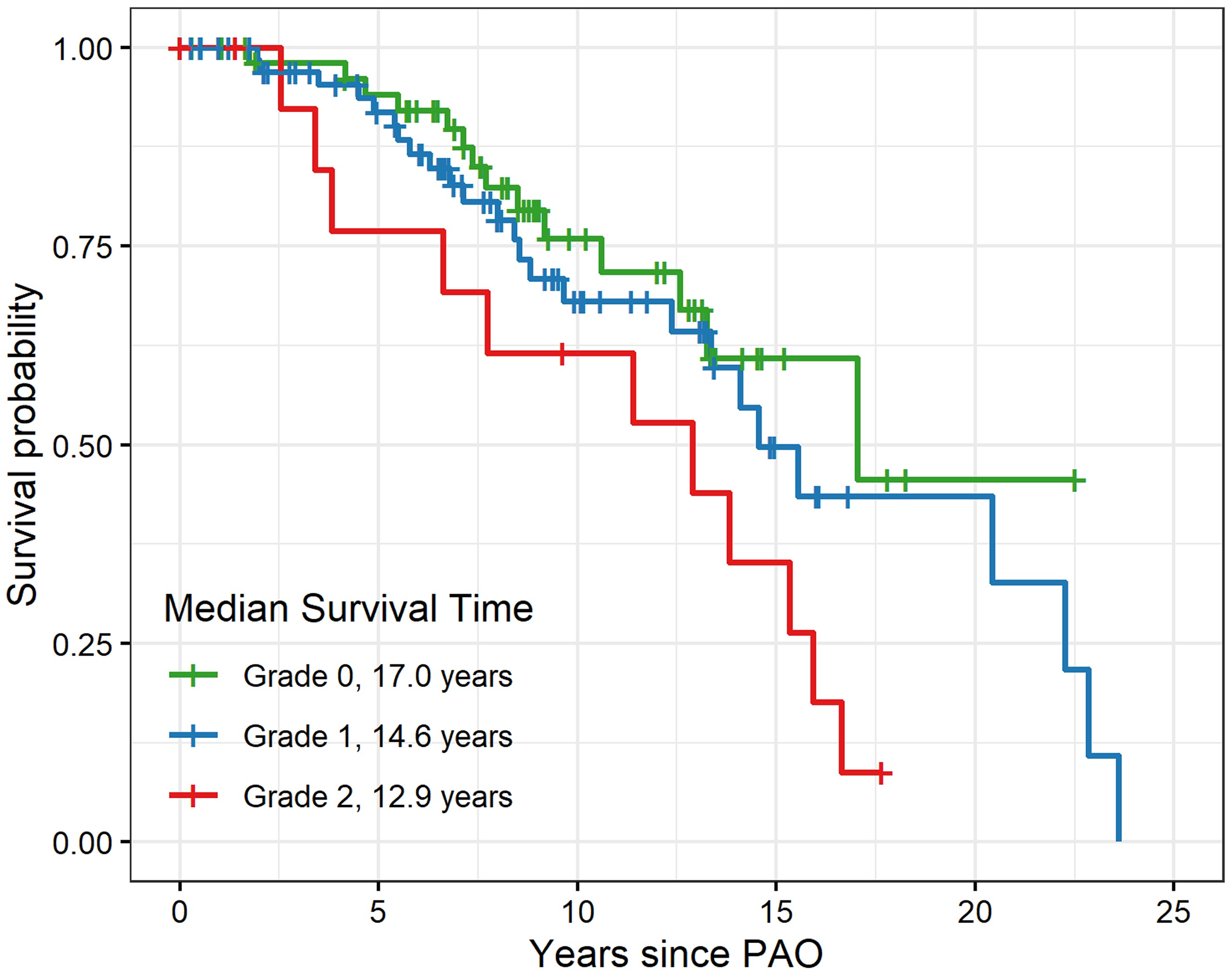In this post, Dr. Matt Schmitz, JBJS Deputy Editor for Social Media, discusses a new study that evaluates periacetabular osteotomy for symptomatic acetabular dysplasia in patients ≥40 years of age.
Hip preservation surgery continues to grow as an option in orthopaedic treatment. One of the mainstays in this area is the periacetabular osteotomy (PAO) for the correction of hip dysplasia. With multiple studies indicating that it alters the natural history of dysplasia and may delay the onset of osteoarthritis (OA), PAO has been shown to be a powerful tool. However, previous work has suggested that there may be age or OA cutoffs in terms of which patients experience prolonged benefit from the procedure.
In the August 2, 2023 issue of JBJS, Novais et al. report on the medium to long-term outcomes of patients who underwent PAO at ≥40 years of age and identify potential risk factors for surgical failure among these patients. Access the study at JBJS.org:
The researchers, including senior surgeons at Boston Children’s Hospital and Washington University School of Medicine in St. Louis, retrospectively identified 997 patients who had undergone PAO between 1990 and 2013 at the 2 institutions. Of these, 166 were ≥40 years of age at the time of surgery and were included in the study (mean age, 44 years; range, 40 to 60 years). Ninety percent (149) of the included patients were female, and 87% (145) were followed for ≥4 years after surgery.
Preoperative and postoperative patient-reported outcome measures assessed included the modified Harris hip score (mHHS) and Western Ontario and McMaster Universities Osteoarthritis Index (WOMAC). The authors defined “failure” of PAO as a conversion to or recommendation for a total hip arthroplasty (THA) or a WOMAC pain score of ³10 at the most recent follow-up, indicating moderate pain or worse. Preoperatively, of 143 hips graded, 55 hips (38%) were graded as Tönnis 0 (no radiographic signs of OA), while 73 hips (51%) had Tönnis grade 1 changes and 15 hips (10%) had Tönnis grade 2 changes.
Study Findings
Of the 145 patients with ≥4 years of follow-up, 61 (42%) experienced PAO failure after a median 8 years (range, 0.6 to 25.3 years). THA was recommended or performed for 48 patients (median, 8.5 years after PAO), while 13 patients had a WOMAC score of ≥10 at the most recent visit (median, 9.2 years). Age, sex, body mass index, and preoperative lateral and anterior center-edge angles were not significantly associated with PAO failure. However, the researchers found that worse preoperative Tönnis grades (p = 0.03) and worse WOMAC function scores (p < 0.001) were associated with an increased likelihood of failure. The median survival time was 17.0 years for Tönnis grade 0 hips, 14.6 years for Tönnis grade 1, and 12.9 for Tönnis grade 2. In addition, the 5-year survival in this cohort of ≥40 years was 90%, which is comparable to the findings of other studies including patients of all ages.
One must note that the centers performing the PAOs in this study were on the forefront of bringing this procedure from Bern to the U.S. and are 2 of the highest-volume centers performing PAOs in the U.S. The results then may not be generalizable across the board but likely represent a “best-case” scenario. That being said, data from this study suggest that PAO can be effective in patients over the age of 40 who have little to no arthritis and good preoperative function, and that the results can be durable. Age really is just a number, and the status of the hip from a radiographic and functional standpoint appears to be more important than age alone. Maybe 40 really is the new 20? At least that is what I remind myself every spring around the time of my birthday.
Access the complete study at JBJS.org: Periacetabular Osteotomy for Symptomatic Acetabular Dysplasia in Patients ≥40 Years Old: Intermediate and Long-Term Outcomes and Predictors of Failure
JBJS Deputy Editor for Social Media




